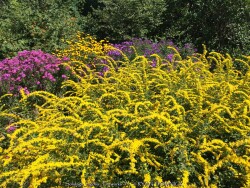

Fireworks Goldenrod (Solidago rugosa 'Fireworks') is the most garden-worthy of the goldenrods! It features dark green upright foliage. As the flower panicle matures, the expanding buds create a fine-textures cloud-like effect for about a month before the flowers open. When the flowers finally open in September, the radiating form really looks like fireworks! After flowering, the dried flower structure holds up well into fall offering winter interest until the first wet heavy snow. The species, Solidago rugosa, is native to the eastern and central parts of the United States and Canada. It is a highly adaptable goldenrod occuring in open moist areas such as low woods, meadows, old fields, pine barrens, and bogs. It is more tolerant of wet soils that other goldenrod. It prefers locations in full sun in average to moist soils that are well-drained but is adaptable to part shade or dappled shade. In Eastern Kansas, typically our 40 inches of rainfall is sufficient without extra water if planted in good soils. During the drought years in Eastern Kansas of 2011 and 2012, many Fireworks Goldenrods planted in landscapes that were not watered survived but dried up as flowers were trying to form. Goldenrods are not wind-pollinated and therefore do not cause standard hay fever or allergies. This goldenrod attracts wide variety of insects, including small bees, wasps, flies, small butterflies. Rabbit and deer resistance is good. The slowly expanding clump is virtually maintenance free, only needing trimmed in fate fall. Fireworks Goldenrod is generally very pest and disease resistant and can spread by creeping rhizomes or seed. Fireworks Goldenrod has been planted in our trial gardens over 18 years in mostly full sun with average garden soil. This is among our favorite perennials with truely 4 seasons of interest!
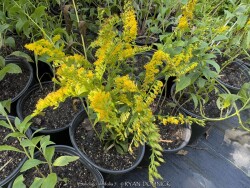

***Description for this perennial available with future update!*** Solidago ulmifolia is also known as Elm Leaf Goldenrod.
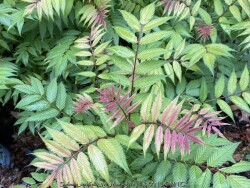

***Shrub descriptions available with future update!*** Sorbaria sorbifolia 'Mr. Mustard' is also known as Mr. Mustard Ural False Spirea >>>>>>>>>>>>Fabulously funky! Mr. Mustard boasts extraordinarily colorful foliage - yellow, orange, red, pink, and lime green meld together in springtime to make a truly memorable show. By summertime, the foliage mellows to a vibrant Kelly green and complements the fabulous creamy white flowers. These large, astilbe-like blooms attract butterflies and pollinators and its suckering habit lends a naturalized look to any garden. With some annual pruning, it easily keeps its mounded habit, suiting it perfectly for mixed beds. >>>>>>All Proven Winners® plants are legally propagated, healthy and vigorous, true to name, and tagged with color pictures and growing information. >>>>>>>>Ultra cold-hardy plants from northern climates normally dislike our long hot humid summers; although we are on the Southern edge of this plants adaptability, it still survives reasonably well here. Look for a cold microclimate planting location such as East or North exposure.>>>>>
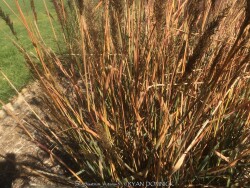

Indian Grass (Sorghastrum nutans) is easily grown in average, dry to medium, well-drained soils in full sun. It is tolerant of a wide range of soils and growing conditions but tends to flop in rich moist soils. This ornamantal grass is a tall, Kansas native, perennial, warm season grass that dominates much of the tall grass prairie extending into the Flint Hills. In fact, Indiangrass, Big bluestem, Little bluestem, and Switchgrass comprise 75% of the species in this ecosystem. It may be grown as an ornamental grass because of its attractive foliage which changes color seasonally along with its good architectural height and its interesting yellow flower/seed heads. Indian Steel Indian Grass (Sorghastrum nutans 'Indian Steel') has improved bluish green foliage that turns yellow in fall and retain some gold color throughout the winter. Feathery panicles of tan-yellow flowers appear well above the foliage in late summer to early fall adding winter interest
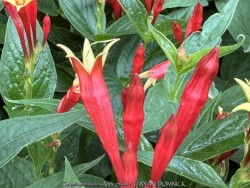

***Description for this perennial available with future update!***Spigelia / Indian Pink, is also known as Spigelia marilandica
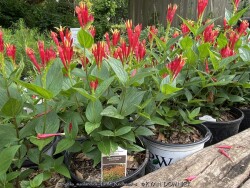

***Description for this perennial available with future update!***Little Red Head Spigelia / Indian Pink, is also known as Spigelia marilandica 'Little Red Head'


***Description for this perennial available with future update!***Ragin Cajun' Spigelia / Indian Pink, is also known as Spigelia marilandica 'Ragin Cajun'


***Shrub descriptions available with future update!***Double Play Candy Corn Spirea, is also known as Spiraea japonica 'Double Play Candy Corn'
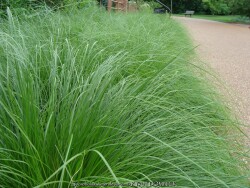

***Description for this grass available with future update!***Prairie Dropseed, is also known as Sporobolis heterolepis
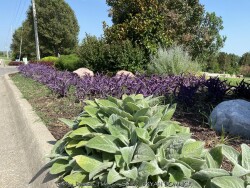

***Description for this perennial available with future update!***Helen Von Stein Lambs Ear, is also known as Stachys byzantina 'Helen Von Stein'
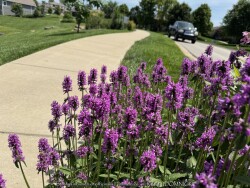

***Description for this perennial available with future update!***Hummelo Stachys (small), is also known as Stachys monieri / officinalis 'Hummelo'
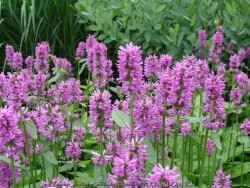

***Description for this perennial available with future update!***Hummelo Stachys (flat), is also known as Stachys monieri / officinalis 'Hummelo'


***Description for this perennial available with future update!***Hummelo Stachys (large), is also known as Stachys monieri / officinalis 'Hummelo'
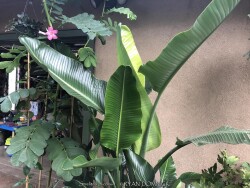

***Description for this plant available with future update!***White Bird of Paradise (Tropical), is also known as Strelitzia nicolai
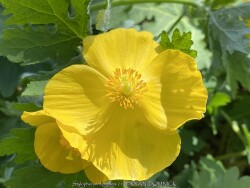

***Description for this perennial available with future update!*** Stylophorum diphyllum is also known as Yellow Woodland Poppy / Celandine Poppy >>>>>>>>>>>>For the home garden, the species is generally too aggressive to mix with other plants


Coralberry (Symphoricarpos orbiculatus) is a spreading dwarf shrub native to much of the central and eastern United States including Kansas. It features mint green leaves that remain attractive all summer. Light pink flowers are barely noticeable but attractive upon close inspection. Ornamental clusters of magenta berries in the fall are the main attraction! The berries are very freeze-hardy clinging onto the leafless stems throughout most of the winter regardless of the minimum temperatures. This creates quite a show providing excellent color and interest to the winter landscape. While edible for some birds including robins, they seem to avoid the fruits unless it's a last resort. Coralberry is commonly grown as a spreading groundcover shrub for difficult areas. It will grow in full sun or full shade in medium to dry soils including dry-shade. It tolerates moist soil and floods for short periods of time. Fall leaf color is non-existent but ok because of the berry display. A brief window of time exists in the fall where the plant has beautiful green foliage and contrasting magenta berries at the same time. In the landscape, it is commonly used as large mass planting on hills. Because of its tolerance for adverse conditions including poor soil and rock, it is often one of the last resort plants that will survive in certain areas. It competes well under large shade trees and helps absorb leaf litter allowing it to break down and add nutrients back to the soil. This plant also does well in full sun; berry density is much greater in full sun. Plants can also be planted on the north side of a house, being extremely cold hardy with no winterkill. Another great spot is planting on top of a retaining wall allowing it to cascade down. We do not recommend planting in small areas or in spaces that it will overrun neighboring plants. It only spreads above ground as horizontally growing stems touch the ground and root. This does make maintenance easier to control the spread of the plant versus digging out rhizomes. Considered one of the best plants for solving your most difficult dry-shade landscape challenges. Proud Berry Pink Coralberry (Symphoricarpos 'Proud Berry') is a Proven Winners® selection that has much larger pink berries in large clusters. Fruit lasts into December but is quicker to dessicate than the true native magenta coralberry. All Proven Winners® plants are legally propagated, healthy and vigorous, true to name, and tagged with color pictures and growing information.
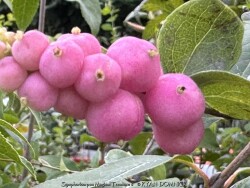

Magical Treasure Snowberry / Coralberry (Symphoricarpos doornsbosii ‘Magical Treasure’) is a spreading dwarf shrub native to much of the northern and central United States. It features mint green leaves that remain attractive all summer. Light pink flowers are barely noticeable but attractive upon close inspection. Ornamental clusters of magenta berries in the fall are the main attraction! The berries are very freeze-hardy clinging onto the leafless stems throughout most of the winter regardless of the minimum temperatures. This creates quite a show providing excellent color and interest to the winter landscape. While edible for some birds including robins, they seem to avoid the fruits unless it's a last resort. Coralberry is commonly grown as a spreading groundcover shrub for difficult areas. It will grow in full sun or full shade in medium to dry soils including dry-shade. It tolerates moist soil and floods for short periods of time. Fall leaf color is non-existent but ok because of the berry display. A brief window of time exists in the fall where the plant has beautiful green foliage and contrasting magenta berries at the same time. In the landscape, it is commonly used as large mass planting on hills. Because of its tolerance for adverse conditions including poor soil and rock, it is often one of the last resort plants that will survive in certain areas. It competes well under large shade trees and helps absorb leaf litter allowing it to break down and add nutrients back to the soil. This plant also does well in full sun; berry density is much greater in full sun. Plants can also be planted on the north side of a house, being extremely cold hardy with no winterkill. Another great spot is planting on top of a retaining wall allowing it to cascade down. We do not recommend planting in small areas or in spaces that it will overrun neighboring plants. It only spreads above ground as horizontally growing stems touch the ground and root. This does make maintenance easier to control the spread of the plant versus digging out rhizomes. Considered one of the best plants for solving your most difficult dry-shade landscape challenges. Magical Treasure Snowberry / Coralberry in a dwarf variety maxing out at 18-24" tall. Berries are larger and more colorful than the species, providing a great source of autumn cut stems for fall arrangements. Full sun will increase ornamental autumn fruit production without as much foliage furn.
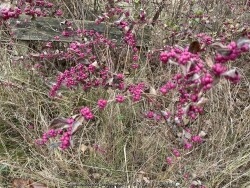

Coralberry (Symphoricarpos orbiculatus) is a spreading dwarf shrub native to much of the central and eastern United States including Kansas. It features mint green leaves that remain attractive all summer. Light pink flowers are barely noticeable but attractive upon close inspection. Ornamental clusters of magenta berries in the fall are the main attraction! The berries are very freeze-hardy clinging onto the leafless stems throughout most of the winter regardless of the minimum temperatures. This creates quite a show providing excellent color and interest to the winter landscape. While edible for some birds including robins, they seem to avoid the fruits unless it's a last resort. Coralberry is commonly grown as a spreading groundcover shrub for difficult areas. It will grow in full sun or full shade in medium to dry soils including dry-shade. It tolerates moist soil and floods for short periods of time. Fall leaf color is non-existent but ok because of the berry display. A brief window of time exists in the fall where the plant has beautiful green foliage and contrasting magenta berries at the same time. In the landscape, it is commonly used as large mass planting on hills. Because of its tolerance for adverse conditions including poor soil and rock, it is often one of the last resort plants that will survive in certain areas. It competes well under large shade trees and helps absorb leaf litter allowing it to break down and add nutrients back to the soil. This plant also does well in full sun; berry density is much greater in full sun. Plants can also be planted on the north side of a house, being extremely cold hardy with no winterkill. Another great spot is planting on top of a retaining wall allowing it to cascade down. We do not recommend planting in small areas or in spaces that it will overrun neighboring plants. It only spreads above ground as horizontally growing stems touch the ground and root. This does make maintenance easier to control the spread of the plant versus digging out rhizomes. Considered one of the best plants for solving your most difficult dry-shade landscape challenges.
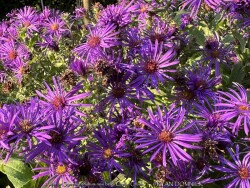

***Description for this perennial available with future update!*** Symphyotrichum / Aster novae-belgii 'Grape Crush' is also known as Grape Crush Aster >>>>> >>>>>> This fall blooming aster does not splay open like other Asters can. According to Walters Gardens "Bringing refinement to fall blooming Asters, 'Grape Crush' produces a large, very round mound with densely packed flowers. We have observed no lodging in our trials, a phenomenal achievement for fall blooming Asters. Very rich, dark purple flowers are produced above dark green foliage in early fall to midfall. A perfect finale to the growing season!" Asters are native to North America and are generally very easy to grow.


***Description for this perennial available with future update!*** Symphyotrichum oblongifolium / Aster oblongifolium is also known as Aromatic Aster.


***Description for this perennial available with future update!*** Symphyotrichum pilosum / Aster pilosum is also known as Frost aster / Hairy Aster.


Dry Shade Comfrey / Large-Flowered Comfrey (Symphytum grandiflorum) is a perennial native to Europe with textured sandpapery green leaves and light yellow flowers. It spreads by creeping rhizomes and forms an attractive groundcover. Foliage is quite dense forming a tight weed resistant covering. Comfrey prefers rich average to moist well-drained soils with part sun to full shade. However, being a tolerant plant, is very adaptable to both dry and moist locations and will grow quite nicely in dry shade. It is not particular as to soil type or pH. and is highly tolerant of urban pollution and will even thrive in inner city environments. There is virtually no maintenance unless you want to mow down the dead foliage in the winter. It is also suggested to deadhead the flowers after blooming as they are not attractive. But if you don't, they will die back on their own and get swallowed up by the foliage. In addition to being a great perennial for your landscape, this comfrey may have herbal uses as well. There are no pest, disease, or browser problems. Considered one of the best plants for solving your most difficult dry-shade landscape challenges. The blue variety, Symphytum grandiflorum 'Hidcote Blue', has more of a blue green foliage and light blue flowers on taller flower spikes. Spread is also more rapid and sometimes to the point of aggressive and rich moist soil. Comfrey is a great underused plant worthy of more wide scale use in the landscape. Dry Shade Comfrey has persisted through over a decade in our Lawrence, KS display garden with no problems.
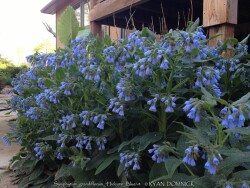

Dry Shade Comfrey / Large-Flowered Comfrey (Symphytum grandiflorum) is a perennial native to Europe with textured sandpapery green leaves and light yellow flowers. It spreads by creeping rhizomes and forms an attractive groundcover. Foliage is quite dense forming a tight weed resistant covering. Comfrey prefers rich average to moist well-drained soils with part sun to full shade. However, being a tolerant plant, is very adaptable to both dry and moist locations and will grow quite nicely in dry shade. It is not particular as to soil type or pH. and is highly tolerant of urban pollution and will even thrive in inner city environments. There is virtually no maintenance unless you want to mow down the dead foliage in the winter. It is also suggested to deadhead the flowers after blooming as they are not attractive. But if you don't, they will die back on their own and get swallowed up by the foliage. In addition to being a great perennial for your landscape, this comfrey may have herbal uses as well. There are no pest, disease, or browser problems. Considered one of the best plants for solving your most difficult dry-shade landscape challenges. The blue variety, Symphytum grandiflorum 'Hidcote Blue', has more of a blue green foliage and light blue flowers on taller flower spikes. Spread is also more rapid and sometimes to the point of aggressive and rich moist soil. Comfrey is a great underused plant worthy of more wide scale use in the landscape. Dry Shade Comfrey has persisted through over a decade in our Lawrence, KS display garden with no problems.
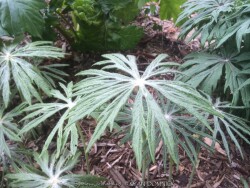

Japanese Shredded Umbrella Plant (Syneilesis aconitifolia) is a perennial with bright green dissected leaves cascade downward like an umbrella. Emerging foliage is covered with a unique white fur. It spreads very slowly by creeping rhizomes that form a tight clump after many years. Fine-textured foliage is quite dense; it forming a tight weed resistant covering. White flowers on mauve pink calyxes tower above the foliage in midsummer but are not especially attractive unless viewed up close. Some gardeners cut the flowers promptly to avoid distraction from the amazing foliage. Japanese Shredded Umbrella Plant prefers rich average to moist well-drained soils with morning sun to full shade. However, being a tolerant plant, is adaptable to both dry and moist locations and will grow quite nicely in mild dry shade. It is not particular as to soil type or pH. There is virtually no maintenance accept cutting down in fall after the first hard freeze. It is also suggested that if allowing flowering to occur, to deadhead the flowers after blooming as they are not attractive either. There are no pest, disease, or browser problems. This plant is a great underused specimen for the shade garden worthy of more wide scale use in the landscape. Having persisted in our Lawrence, KS display garden with no problems for over a decade, this is a "must have" if and when available to purchase!
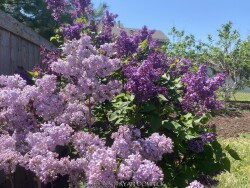

***Shrub descriptions available with future update!*** Syringa vulgaris is also known as Common Purple Lilac >>>>>>>>>>>>Ultra cold-hardy plants from northern climates normally dislike our long hot humid summers; although we are on the Southern edge of this plants adaptability, it still survives reasonably well here. Look for a cold microclimate planting location such as East or North exposure.>>>>>
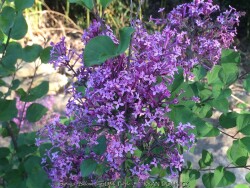

***Shrub descriptions available with future update!***Bloomerang Reblooming Dark Purple Lilac, is also known as Syringa x 'Bloomerang Dark Purple'
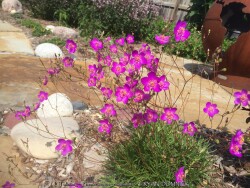

This tiny perennial wildflower (Talinum / Phemeranthus calycinum) produces ascending stems 2-6" long topped with bright magenta flowers. The cluster of bright green foliage at the base is only a few inches tall and resembles round tubes giving it a succulent look. Blooming occurs in mass, each flower lasting only 1 afternoon, but repeating all summer with available moisture. Fame Flower is native to a large area of the great plains to the eastern woods of Missouri and Arkansas. This cold hardy succulent occupies an unusual niche: growing in extremely shallow sandstone based soils and on sunny rock cliffs that dry out too quickly for most other plants to colonize. A good question is how does it find such isolated areas to colonize in the first place? Grow this small native gem in a rock garden, in cracks between rocks, or on top of or in a retaining wall. It will re-seed to thicken the colony but only germinate in bare thin soils with no mulch. It will not tolerate competition in rich moist soils as other plants will shade it out. If grown in pots and kept on the dry side, you may leave out all winter allowing to freeze solid; plants will either return from dormant stems or reseed in the same pot. Great low maintenance cold hardy succulent. ADDITIONAL INFORMATION ABOUT CREVICE GARDENING: In nature, some of the most interesting xeric plants grow in tough places such as inhospitable rock outcroppings with almost no soil. We can recreate that specific and exclusive growing environment with a crevice garden. Crevice gardening allows you to grow cold-hardy cacti and succulents that are normally cold hardy to our climate (Lawrence, KS zone 6a) but not normally tolerant of excessive moisture (40"/year), especially in the winter. This technique provides optimal xeriscape growing conditions by limiting the amount of soil and water around the roots and reducing the potential of root rot. Start with a raised mound of fast draining soil mix consisting mostly of decomposed granite, coarse sand, gravel, and a small amount of organic matter. Incorporate vertical rock formations such as flagstone into a raised landscape bed creating narrow 1-2" wide crevices filled with the soil mix. This helps quickly channel rain and snow melt water down more deeply into the soil encouraging deeper root growth while keeping the soil dry around the base of the plant. It is important that the entire mound is well above grade level to avoid drainage problems; crevice gardens typically range from 12"-36" tall. After installing the plants, mulch with a thin layer of pea-gravel or decomposed granite. In our Lawrence Kansas zone 6a winters with occasional polar vortexes or arctic blasts, this technique works well in any hot microclimate such as a south facing side of a berm or under a south or west facing roof overhand of a house or building. Kansas Plant Farm LLC built a trial crevice garden in 2022 and we have now had enough time to evaluate the plants after a true winter cold spell. During the arctic blast of January 2024, low nighttime temperatures got down to -11 degrees F (Jan 10th,2024). The longevity of this cold blast was also impressive: 4 days on a row with single digit highs including 1 day with a daytime negative high(-2F), 4 nights of lows in negatives (-8For lower), and 48 straight hours of 0 degrees F and mostly lower. A light snow cover helped insulate the ground but wind blew off most powdery snow on the foliage exposing the top parts of the plants to some extreme temperatures with surprisingly little damage. In our crevice trial gardens in Lawrence, KS (zone 6a), this variety survived harsh winters for 20 plus years.
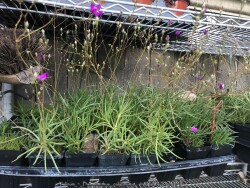

This tiny perennial wildflower (Talinum / Phemeranthus calycinum) produces ascending stems 2-6" long topped with bright magenta flowers. The cluster of bright green foliage at the base is only a few inches tall and resembles round tubes giving it a succulent look. Blooming occurs in mass, each flower lasting only 1 afternoon, but repeating all summer with available moisture. Fame Flower is native to a large area of the great plains to the eastern woods of Missouri and Arkansas. This cold hardy succulent occupies an unusual niche: growing in extremely shallow sandstone based soils and on sunny rock cliffs that dry out too quickly for most other plants to colonize. A good question is how does it find such isolated areas to colonize in the first place? Grow this small native gem in a rock garden, in cracks between rocks, or on top of or in a retaining wall. It will re-seed to thicken the colony but only germinate in bare thin soils with no mulch. It will not tolerate competition in rich moist soils as other plants will shade it out. If grown in pots and kept on the dry side, you may leave out all winter allowing to freeze solid; plants will either return from dormant stems or reseed in the same pot. Great low maintenance cold hardy succulent. ADDITIONAL INFORMATION ABOUT CREVICE GARDENING: In nature, some of the most interesting xeric plants grow in tough places such as inhospitable rock outcroppings with almost no soil. We can recreate that specific and exclusive growing environment with a crevice garden. Crevice gardening allows you to grow cold-hardy cacti and succulents that are normally cold hardy to our climate (Lawrence, KS zone 6a) but not normally tolerant of excessive moisture (40"/year), especially in the winter. This technique provides optimal xeriscape growing conditions by limiting the amount of soil and water around the roots and reducing the potential of root rot. Start with a raised mound of fast draining soil mix consisting mostly of decomposed granite, coarse sand, gravel, and a small amount of organic matter. Incorporate vertical rock formations such as flagstone into a raised landscape bed creating narrow 1-2" wide crevices filled with the soil mix. This helps quickly channel rain and snow melt water down more deeply into the soil encouraging deeper root growth while keeping the soil dry around the base of the plant. It is important that the entire mound is well above grade level to avoid drainage problems; crevice gardens typically range from 12"-36" tall. After installing the plants, mulch with a thin layer of pea-gravel or decomposed granite. In our Lawrence Kansas zone 6a winters with occasional polar vortexes or arctic blasts, this technique works well in any hot microclimate such as a south facing side of a berm or under a south or west facing roof overhand of a house or building. Kansas Plant Farm LLC built a trial crevice garden in 2022 and we have now had enough time to evaluate the plants after a true winter cold spell. During the arctic blast of January 2024, low nighttime temperatures got down to -11 degrees F (Jan 10th,2024). The longevity of this cold blast was also impressive: 4 days on a row with single digit highs including 1 day with a daytime negative high(-2F), 4 nights of lows in negatives (-8For lower), and 48 straight hours of 0 degrees F and mostly lower. A light snow cover helped insulate the ground but wind blew off most powdery snow on the foliage exposing the top parts of the plants to some extreme temperatures with surprisingly little damage. In our crevice trial gardens in Lawrence, KS (zone 6a), this variety survived harsh winters for 20 plus years.
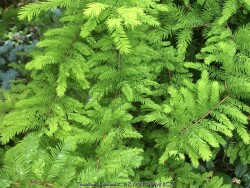

Bald Cypress (Taxodium distichum) is a well-known picturesque tree native to the southeast from Texas to Florida to Virginia. It is a deciduous conifer that grows on saturated and seasonally inundated soils but also performs well an average garden soils including some drought. Trees can be very long lived due to near immunity from pests and disease with some specimens over 2000 years old. When growing in standing water (exclusively), the characteristic knees develop. These are thought to assist an oxygen exchange or to trap sediment along a channel to stabilize the creek bank. Growth is slow during youth especially and dryer sites or poor soils but speeds up in rich well-drained soils. This non-flowering tree features extremely fine textured foliage that creates its own attractive mulch under the tree or blends in invisibly into the lawn. Most references indicate that acidic soil is important however I have seen these growing in pure white limestone alkaline streams in Austin Texas. The water was cyystal clear and pH was so high that not many other organisms for growing in it. Bald Cypress makes a beautiful street tree or residential landscape specimen that will be highly prized after a decade or two. Reserve for the wet test spot in your yard and it will thrive!
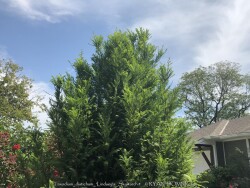

Bald Cypress (Taxodium distichum) is a well-known picturesque tree native to the southeast from Texas to Florida to Virginia. It is a deciduous conifer that grows on saturated and seasonally inundated soils but also performs well an average garden soils including some drought. Trees can be very long lived due to near immunity from pests and disease with some specimens over 2000 years old. When growing in standing water (exclusively), the characteristic knees develop. These are thought to assist an oxygen exchange or to trap sediment along a channel to stabilize the creek bank. Growth is slow during youth especially and dryer sites or poor soils but speeds up in rich well-drained soils. This non-flowering tree features extremely fine textured foliage that creates its own attractive mulch under the tree or blends in invisibly into the lawn. Most references indicate that acidic soil is important however I have seen these growing in pure white limestone alkaline streams in Austin Texas. The water was cyystal clear and pH was so high that not many other organisms for growing in it. Bald Cypress makes a beautiful street tree or residential landscape specimen that will be highly prized after a decade or two. Reserve for the wet test spot in your yard and it will thrive! Taxodium distichum 'Lindsey's Skyward' is a columnar upright form great for screening.


Bald Cypress (Taxodium distichum) is a well-known picturesque tree native to the southeast from Texas to Florida to Virginia. It is a deciduous conifer that grows on saturated and seasonally inundated soils but also performs well an average garden soils including some drought. Trees can be very long lived due to near immunity from pests and disease with some specimens over 2000 years old. When growing in standing water (exclusively), the characteristic knees develop. These are thought to assist an oxygen exchange or to trap sediment along a channel to stabilize the creek bank. Growth is slow during youth especially and dryer sites or poor soils but speeds up in rich well-drained soils. This non-flowering tree features extremely fine textured foliage that creates its own attractive mulch under the tree or blends in invisibly into the lawn. Most references indicate that acidic soil is important however I have seen these growing in pure white limestone alkaline streams in Austin Texas. The water was cyystal clear and pH was so high that not many other organisms for growing in it. Bald Cypress makes a beautiful street tree or residential landscape specimen that will be highly prized after a decade or two. Reserve for the wet test spot in your yard and it will thrive! Pond Cypress (Taxodium distichum var. imbricarium) in now considered a naturally occuring variety of Bald Cypress. Its old name was Taxodium ascendens. In comparison to Bald Cypress, Pond Cypress is somewhat smaller, more narrow, less branching and has very interesting scale-like spirally arranged leaves.
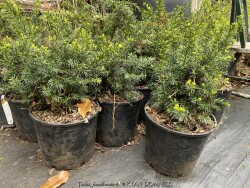

***Shrub descriptions available with future update!***Capitata Upright Pyramidal Yew, is also known as Taxus cuspidata 'Capitata'
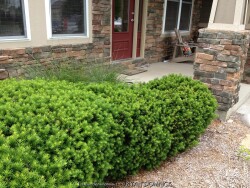

Densiformis Hedge Yew (Taxus x media 'Densiformis') is an evergreen shrub with small flat needle-like dark green leaves. Small red "fruits" form on mature plants with proper pollination and in the absence of pruning. This yew is of hybrid origin along with many varieties ranging from small shrubs to small trees. Taxus x media varieties grow rather slowly and lend themself excellently to being pruned into hedges as long as not too much is taken off at one time. After a plant achieves a certain height, you may keep it that size indefinitely with 3 to 4 times per year pruning. Yews prefer part shade with rich to average well-drained soil and average moisture. Yews planted in the full sun will survive but develop an burnt yellowish green color when temperatures exceed 100°F. This is usually a problem in zone 6 or further south as there are many better choices for full sun (morning sun is okay). In zones 4-5, full sun is probably okay. Yews are best known for their tolerance to dry shade even under root bound conditions. They will not survive more than a couple years under a roof overhang due to lack of moisture in the winter and spider mite problems. In the Eastern and Southeastern United States, Yews have many problems including root rot, insect and disease issues. None of these are a problem in Kansas or Oklahoma with lower rainfall amounts and less humidity. In the landscape, yews offer a year-round structure. They definitely help provide a background for more interesting plants with colorful foliage and flowers. They are also very well known and used in formal garden designs. We prefer to see them less pruned and then there more natural state. A word of caution is that yews are poisonous.
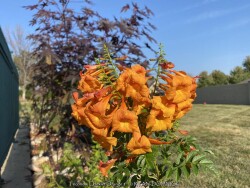

Esperanza (Tecoma fulva) is an attractive, dry deciduous shrub native to southern Bolivia and northwestern Argentina with pinnate foliage and trumpet-shaped, bright orange-red flowers. Tecoma fulva 'Chicklet Orange' is a compact selection with exceptional flower power, so it will add a lot to landscapes either as a landscape shrub or as a patio plant. It has the same fun flowers as a trumpet vine but isn't invasive, and will grow 3-6' tall and 2-4' wide. It will do best in full sun. All Proven Winners® plants are legally propagated, healthy and vigorous, true to name, and tagged with color pictures and growing information.


Rice Paper Plant (Tetrapanax papyrifer) is a hardy tropical with large palmate leaves up to 24" across. In warmer zones and in its native habitat in Taiwan, Tetrapanax is a large shrub or small tree with white flowers produced in the fall. However in our Lawrence Kansas zone 6a climate, Tetrapanax is killed down to the ground each year like crapemyrtles and butterfly bush. A thick mulch is appreciated when young but not needed on established plantings. Tetrapanax is not picky about soils or moisture but will display fastest growth in rich, moist, well-drained areas in full sun. Tetrapanax will also tolerate almost full shade when established. Because it spreads by rhizomes, be sure to allow plenty of space or have control methods in place. Generally, chopping off shoots as they emerge as easy enough. Another word of caution is that Tetrapanax contains a white powdery-like cottony substance on near stems and back sides of leaves. This can cause eye and throat irritation so be careful when cutting back to not rub off the dust (or do so up-wind). Tetrapanax is a very rare plant in cultivation but can also be seen at the Wichita botanical gardens, Botanica. There is a giant form called Tetrapanax papyrifer 'Steroidal Giant' available at Plant Delights Nursery in North Carolina with leaves up to 3 feet wide and less spreading but we have not been able to procure or establish this plant in our Lawrence, KS garden. In our trial gardens in Lawrence, KS (zone 6a), three established mulched specimens of Tetrapanax papyrifer have survived for over 10 years including -17 degrees F in 2021. During that arctic blast of February, 2021, lows down to -17 degrees F on Feb 16th, 2021 were recorded. The longevity of this cold blast was also impressive: 10 days on a row with highs of 10-15 degrees F or lower, 8 nights of lows in the single digits and negatives, and 36 straight hours of 0 degrees F and mostly lower. It can also be grown as a potted patio plant; move into a cold garage or basement over the winter with minimal watering. Allow to go dormant as needed with little care, just cut off dead foliage and place back out in April or May with a time-release fertilizer.
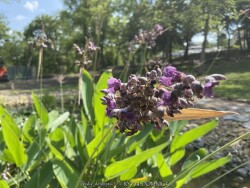

Thalia dealbata, commonly known as Hardy Water Canna, is a native water garden / marginal plant with tropical like foliage resembling that of a canna. This plant is usually grown as a bog plant needing constantly moist soil rich in organic matter. As a rain garden plant, it will thrive is a depressed area in the landscape that collects rain water from a roof during spring and summer periods of rain but then is amazingly drought tolerant if the water hole dries out. After extended drought, it will simply go dormant but not sure how long it will persist in this state. Flowers are purple and have been said to be carnivorous but in reality, small insects get trapped in the gummy gel-like substance around the flowers...larger polinators like bumble bees and carpenter bees can pull away after polination. There are no major or even minor pests: this plant will survive just about anything as long as the root ball doesn't freeze solid, hence the zone 6 designation by most sources. As far as winter hardiness, I would assume there is a requirement for being submerged in water or well mulched (or snow cover) if on dry land in sub freezing weather. A dry hard ground freeze can kill this plant even in warmer zones. In our Lawrence, Kansas display garden (zone 6a), this plant has thrived for many years with little effort.
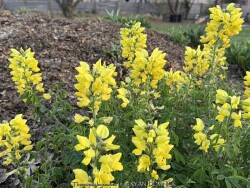

Yellow False Lupine / Lanceleaf Thermopsis, is also known as Thermopsis lanceolata. This plant has beautiful green narrow leaves and black stems on new emerging plants before flowering. Thermopsis lanceolata, the tapered false lupin, is a species of flowering plant in the legume family Fabaceae, native to Russia, Kazakhstan, Mongolia, Nepal and China.
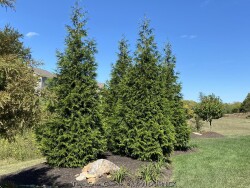

***Tree descriptions available with future update!*** Thuja 'Green Giant' is also known as Green Giant Arborvitae
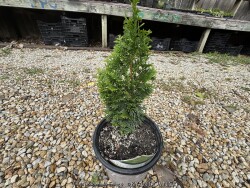

***Shrub descriptions available with future update!*** Thuja occidentalis 'Sting' is also known as Sting Columnar Arborvitae >>>>>>>>>>>>We love plants with interesting architecture, and this selection of our native Eastern arborvitae (Thuja occidentalis) takes skinny to the max with its sword-like sihouette. Use it to make an exclamation point in garden designs, or fit it into a very narrow bed. Certain to be iconic plant in well-designed landscapes everywhere
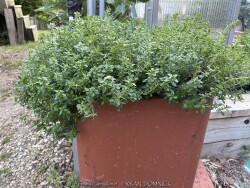

***Description for this perennial available with future update!***Mother of Thyme, is also known as Thymus serpyllum
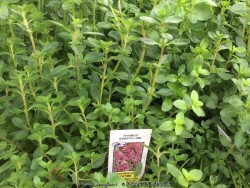

***Description for this perennial available with future update!***Red Creeping Thyme, is also known as Thymus serpyllum 'Coccineum'
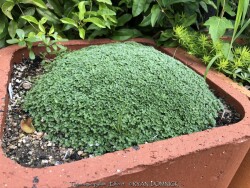

***Description for this perennial available with future update!***Elfin Miniature Creeping Thyme, is also known as Thymus serpyllum 'Elfin'
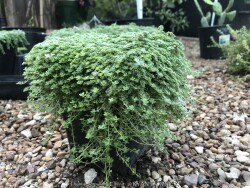

***Description for this perennial available with future update!***Elfin Miniature Creeping Thyme, is also known as Thymus serpyllum 'Elfin'
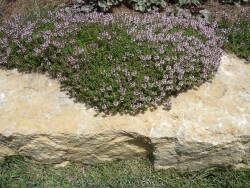

***Description for this perennial available with future update!***Pink Creeping Thyme, is also known as Thymus serpyllum 'Pink Chintz'
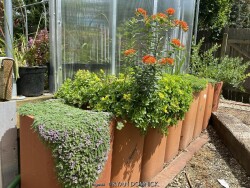

***Description for this perennial available with future update!***Creeping Thyme (Mixed Varieties), is also known as Thymus sp.
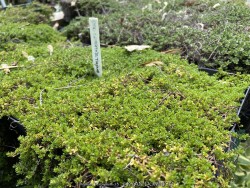

***Description for this perennial available with future update!***Creeping Thyme (Mixed Varieties) flat, is also known as Thymus sp.
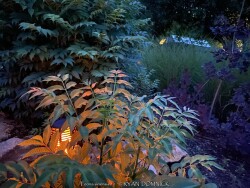

Chinese Toon (Toona sinensis) is a rare shrub-like tree from China in the mahogany family known for its edible leafy foliage. Foliage has an onion a flavor and can be eaten fresh or mixed into stir-fry vegetable recipes. When emerging in the spring, new foliage is a bright red to pink color and is enhanced by cooler weather in the spring. Bi-pinnate foliage deepens to a medium to dark green as it unfurls throughout the summer and has a strong resemblance in appearance to Tree of Heaven (Ailanthus altissima). Fall color is a gorgeous yellow lasting for a week or two. Chinese Toon is useful in the edible landscape as a "vegetable tree". Also very attractive in the landscape, it can form a background shrub, a specimen shrub, or a small colony. Grow in full sun and just about any well drained soil for best results. Although this grows into a "tree" in southern climates, it will typically freeze down to the ground each year in Lawrence Kansas. (zone 6a) The only maintenance is pruning winter-killed growth to the ground. New rapidly growing water sprout shoots will emerge by mid spring. New foliage is the most tasty to eat, so this works out great for harvesting when grown as a "vegetable tree". Chinese Toon can also be grown as a potted plant moved into a garage or dark basement: it doesn't seem to suffer from being root bound in a pot.
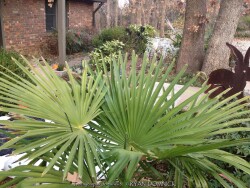

***Description for this plant available with future update!***Chinese Windmill Palm (Tropical), is also known as Trachycarpus fortunei


Sundew Oriental Borage / Black Sea Comfrey (Trachystemon orientalis 'Sundew') is a perennial with large textured bright chartreuse leaves with amazing contrasting light blue flowers. It is native from Bulgaria to the Caucasus and Turkey. This variety spreads very slowly by creeping rhizomes and forms an attractive groundcover. Foliage darkens slightly to green in summer and forms a quite dense and tight weed resistant covering. Comfrey prefers rich average to moist well-drained soils with part sun to full shade. However, being a tolerant plant, is very adaptable to both dry and moist locations and will grow quite nicely in dry shade. It is not particular as to soil type or pH. and is highly tolerant of urban pollution and will even thrive in inner city environments. There is virtually no maintenance unless you want to mow down the dead foliage in the winter. It is also suggested to deadhead the flowers after blooming as they are not attractive. But if you don't, they will die back on their own and get swallowed up by the foliage. There are no pest, disease, or browser problems. Considered one of the best plants for solving your most difficult dry-shade landscape challenges. Trachystemon orientalis 'Sundew' has persisted through over a decade in our Lawrence, KS display garden with no problems. Our original display garden plant came from Plant Delights Nursery in North Carolina.
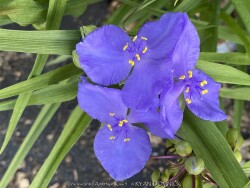

***Description for this perennial available with future update!*** Tradescantia x andersoniana 'Amethyst Kiss' is also known as Amethyst Kiss Spiderwort.